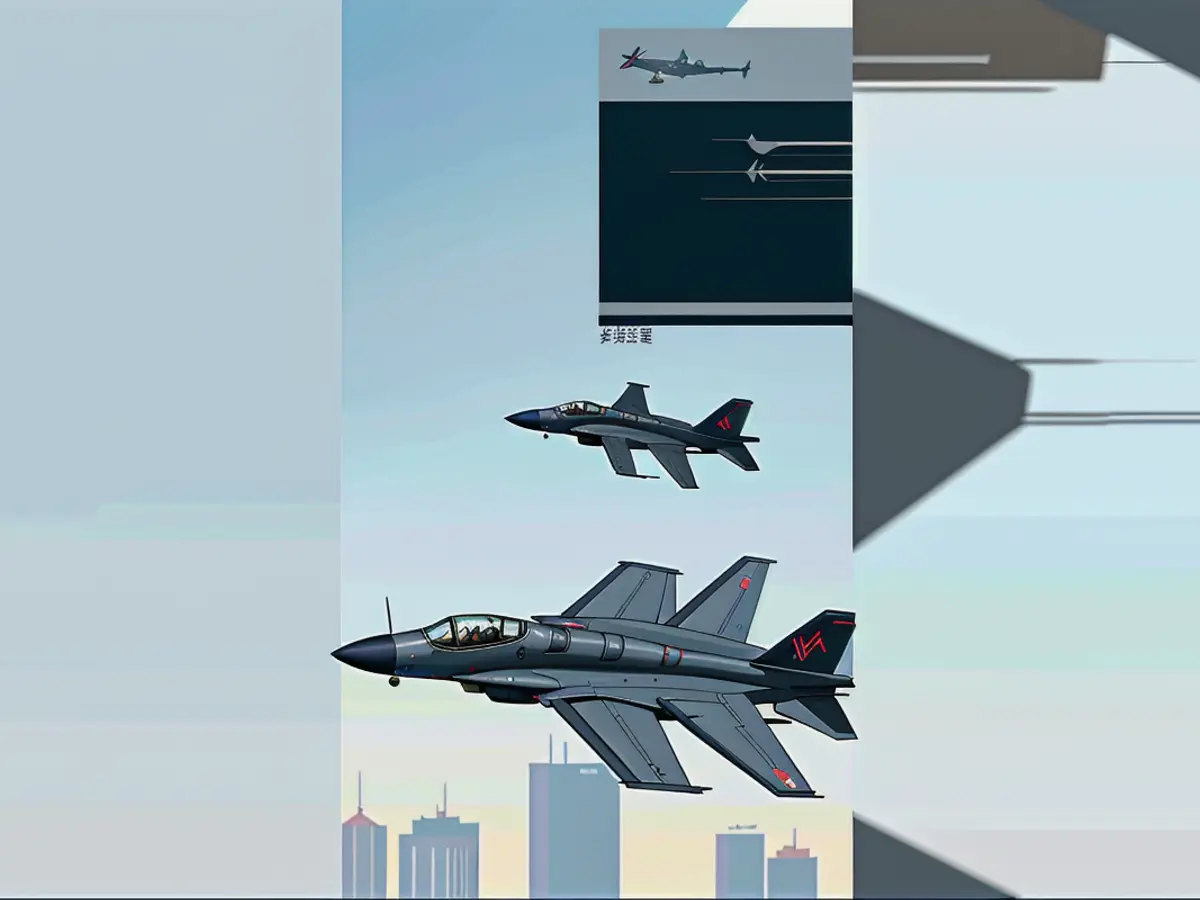Leaving the F-35 behind: Canada weighs its options for a new fighter jet
Canada seeks substitute options for the U.S. F-35 combat aircraft
Going against its initial plan, Canada's new government is thinking outside the box when it comes to purchasing fighter jets. The chilly relationship between Canada and the US, especially under President Donald Trump, has led to a reevaluation of the 88 F-35 jets originally ordered from Lockheed Martin.
According to reports, Defense Minister Bill Blair is open to exploring other options besides the F-35. Blair hinted at the possibility of accepting the first F-35 jets while considering aircraft from European manufacturers, such as the Saab Gripen, for the remaining fleet [1].
If Canada chooses to go a different route, it might face penalties for not completing the whole purchase. The costs of withdrawing are yet to be determined [1]. The first 16 jets have already been paid for, with deliveries set to begin next year [1].
A potential shift in alliances: Portugal spurns the F-35
The decision by Canada's top brass to consider European fighters aligns with Portugal's recent move to distance itself from the US-built F-35 jet. Unlike Canada, Portugal bases its choices on the predictability of its allies when acquiring military equipment [2].
Germany remains one of the US's most loyal F-35 partners, with the delivery of the first six machines scheduled for 2026 to replace the aging Tornados in the German air force. However, lessons learned from Portugal's stance may make other countries reconsider their choices when it comes to buying military hardware [2].
In the race for the perfect fighter jet:
As Canada ponders its options, several contenders have emerged:
- Saab Gripen (Sweden): Known for its flexibility, cost-effectiveness, and proven performance, the Gripen offers advanced avionics and operational flexibility, making it suitable for diverse defense needs [3]. Aligning with Canada's plans to strengthen ties with European NATO allies, the Gripen is a cost-effective solution for air-to-air and air-to-ground missions.
- Dassault Rafale (France): This multi-role fighter boasts capabilities in air superiority, strike, and reconnaissance missions and has proven combat performance across various theaters [3]. Its advanced radar and sensor systems make it highly capable for a wide range of operations. As a bonus, France's military industry has a history of working closely with Canada.
- Eurofighter Typhoon (European Consortium): Primarily an air superiority fighter with multirole capabilities, the Typhoon excels due to its advanced AESA radar and superior maneuverability [3]. Interoperability with European NATO allies ensures a highly capable air combat solution.
- Boeing F/A-18 Super Hornet: A flexible multirole fighter with strength in air superiority and strike missions, the Super Hornet shares operational efficiencies with Canada's existing F/A-18 fleet [3]. With combat performance and versatility in its arsenal, having been deployed in numerous conflict zones, this option is a proven choice.
- Lockheed Martin F-16V Viper: As a modernized version of the F-16, the F-16V features advanced avionics, including the AN/APG-83 AESA radar, and is more cost-effective compared to the F-35 [3]. Capable in both air-to-air and air-to-ground missions, it is used by numerous NATO allies.
- Indigenous Fighter Program: By developing a homegrown fighter, Canada can potentially reduce its reliance on foreign technology while bolstering its defense industry [3]. Customizing the fighter to specific Canadian needs ensures operational independence.
- UK's Tempest Program: This next-generation fighter offers cutting-edge technology, including artificial intelligence and stealth, but remains in development and is not expected to be ready until the 2030s [3]. Potential partnership opportunities with European allies make it an appealing choice despite the wait.
References:[1] CBC News (2021) Canada's new fighter jet: Defence Minister Bill Blair says Ottawa exploring alternatives to the F-35. [Online] Available: https://www.cbc.ca/news/politics/fighter-jets-1.5847633[2] ntv.de (2021) Canada seeks alternatives to US F-35 fighter jet. [Online] Available: https://www.ntv.de/international/Canada-seeks-alternatives-to-US-F-35-fighter-jet,artid-5450032.[3] McPhee, J., (2021) Canada is looking at alternatives to Lockheed Martin’s F-35 fighter jet, and they might choose from these six options. [Online] Available: https://www.businessinsider.com/canada-looking-at-alternatives-to-f-35-fighter-jet-options-2021-5
- In light of the reevaluation of the 88 F-35 jets ordered from Lockheed Martin, Canada's employment policy might involve negotiating tariff adjustments or possibly withdrawing from the contract, which could incur penalties as outlined in the community policy.
- The Ottawa government's consideration of European fighters, such as the Saab Gripen, aligns with Portugal's employment policy regarding military equipment, prioritizing predictability and reliability in its alliances.
- As Canada eyes various fighter jets, including the Lockheed Martin F-16V Viper and the Indigenous Fighter Program, the choice made in 2023 could potentially impact the future of Canada's WhatsApp communication, as foreign-made equipment may require data security regulations compliance.





